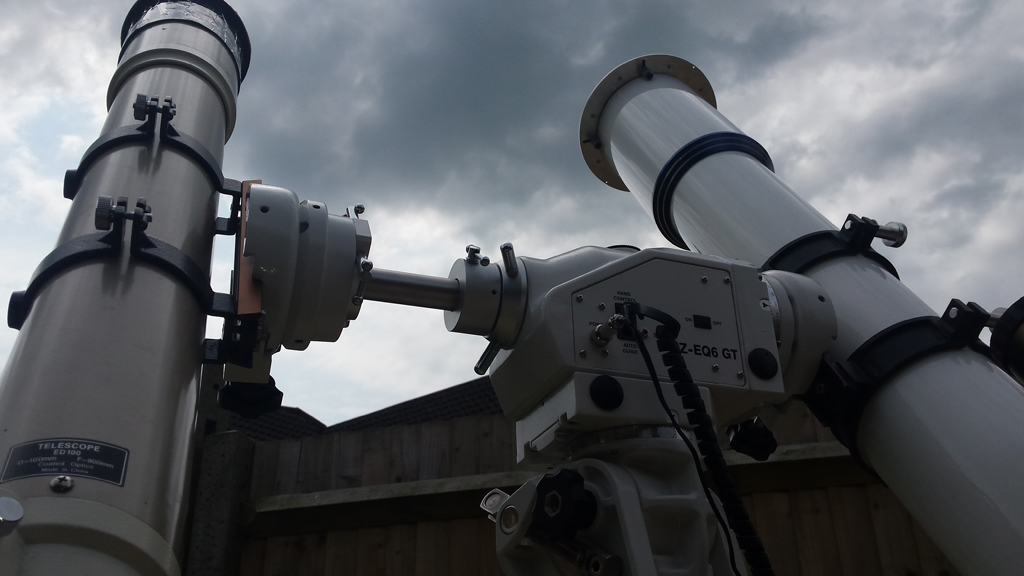In winter, I image stars, planets, nebulae and galaxies, usually with the same Nikon DSLR camera I take to air shows but replacing the lens with a telescope. For deep sky astrophotography, my technique is to take multiple exposures of several minutes each and then integrate them into a single image.
My pictures have been published in fourteen issues of BBC Sky at Night Magazine, who selected one as their picture of the month in February 2013. My image of Jupiter was shortlisted in the Royal Observatory’s Astronomy Photographer of the Year Competition 2014.
Lagoon and Triffid Nebula
In October 2023, I travelled with friends to La Palma, the westernmost of the Canary Islands, to take advantage of its dark skies. The Lagoon and Triffid Nebulae were high on my list of photography targets. Although I’ve visually observed these objects, they never climb more than fifteen degrees above the horizon in the UK, which makes them challenging to image. This photograph records emission, reflection and dark nebulae, Bok globules and even a globular cluster.
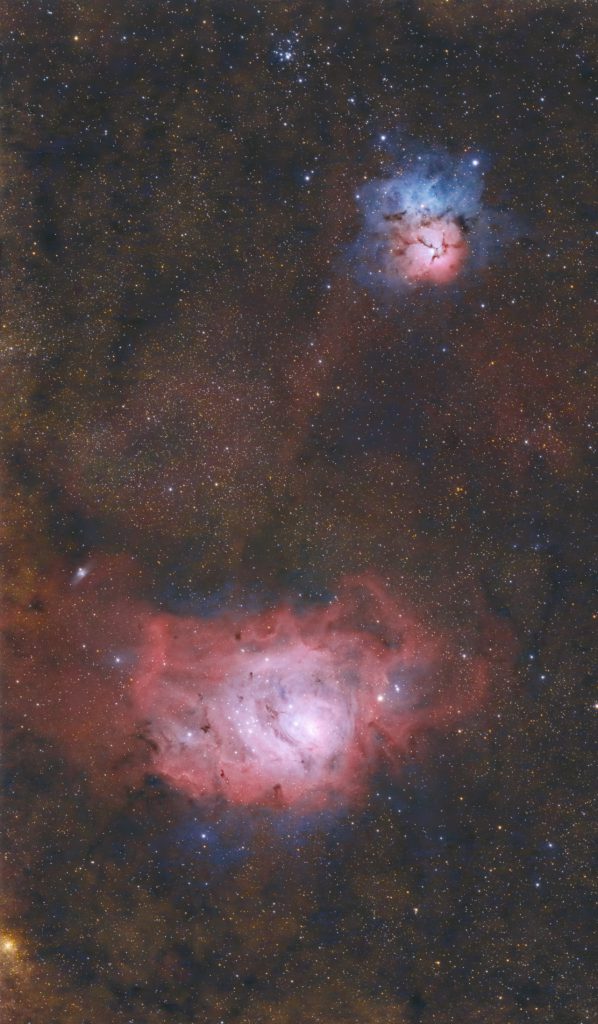
October 2023, Puntagorda, La Palma. Nikon D7000 DSLR; TS-Optics 65mm quadruplet refractor. 2.5 hours exposure.
Running Man Nebula
Often overlooked in favour of the Orion Nebula, its brighter neighbour, this is one of the few celestial objects that resemble their names. To me, it looks like a man skipping over the smoke rising from the nebulae below it.
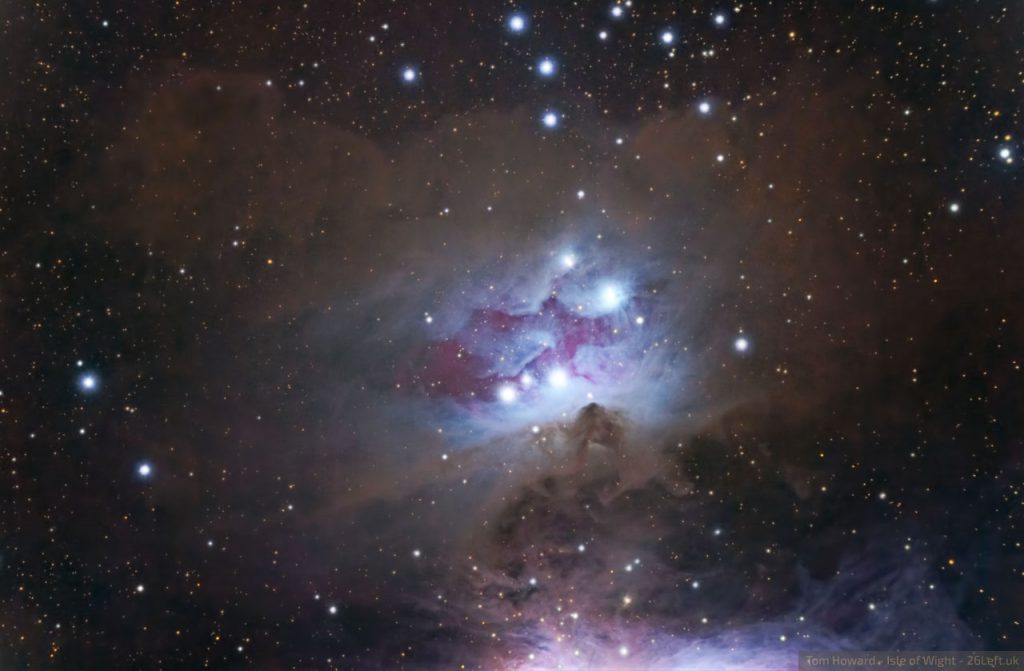
February 2022, Apse Heath, Isle of Wight. Nikon D7000 DSLR; Meade 5000 127mm triplet refractor. 2 hours exposure.
Rosette Nebula
This is a gigantic area of ionised gas, more than twice the apparent size of a full moon. Although I live under relatively dark skies, I chose to use a filter to help increase the contrast between the sky glow and nebula’s red hydrogen gas.
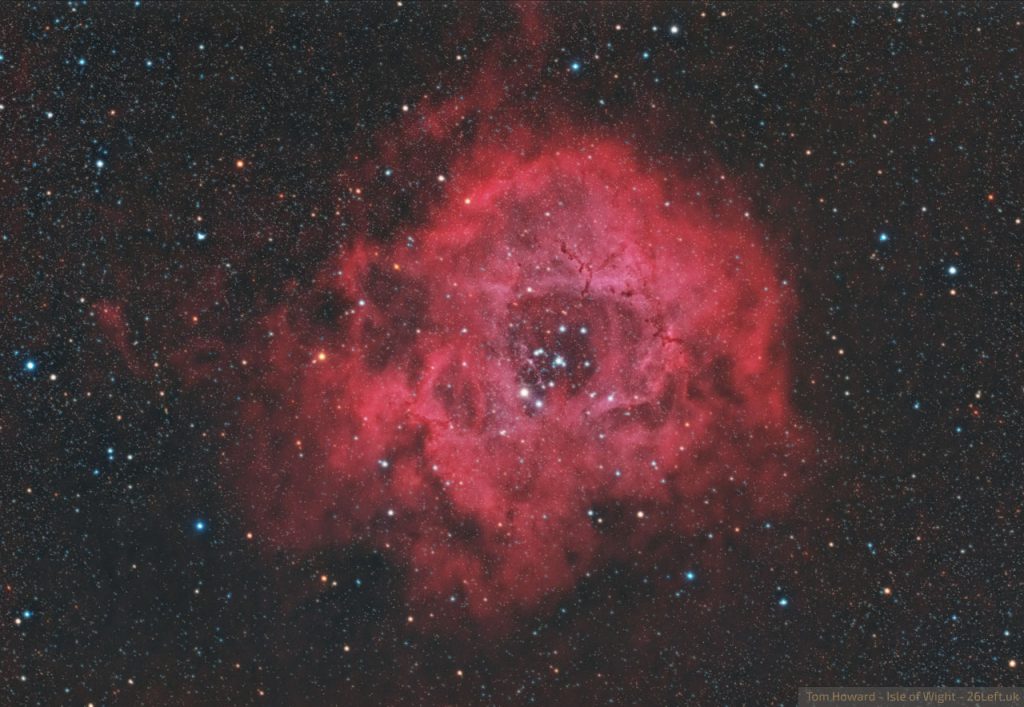
January 2022, Apse Heath, Isle of Wight. Nikon D7000 DSLR; TS-Optics 65mm quadruplet refractor. 4 hours exposure.
Triangulum Galaxy
This was the first deep sky image I took after moving to the Isle of Wight. The Triangulum Galaxy (M33) is a spiral galaxy within our Local Group. At only 3 million light years, it is close enough to be able record many discrete star-forming regions.
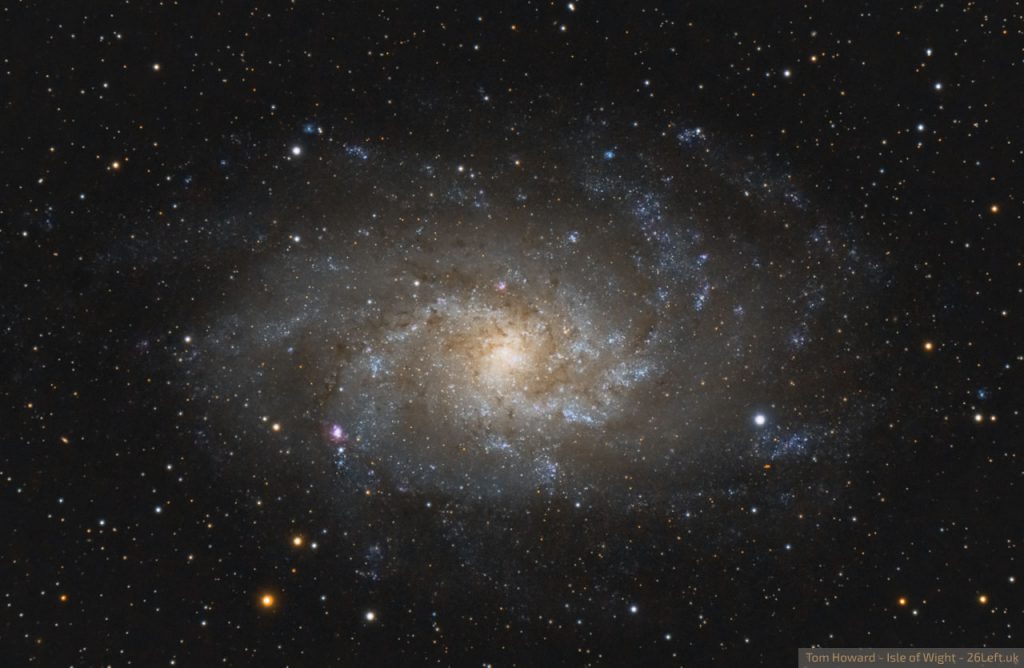
December 2021, Apse Heath, Isle of Wight. Nikon D7000 DSLR; Meade 5000 127mm triplet refractor. 3 hours exposure.
Mars, 2020
2020’s Mars opposition was the best for many years. The planet reached over forty degrees in altitude. At the next opposition, in 2022, it will climb to 63 degrees, but Mars won’t be this close to Earth again (and therefore appear this large) until 2035. I took a series of pictures either side of the opposition, all at the same scale, showing how the planet changed in apparent size and the phase over seven weeks.
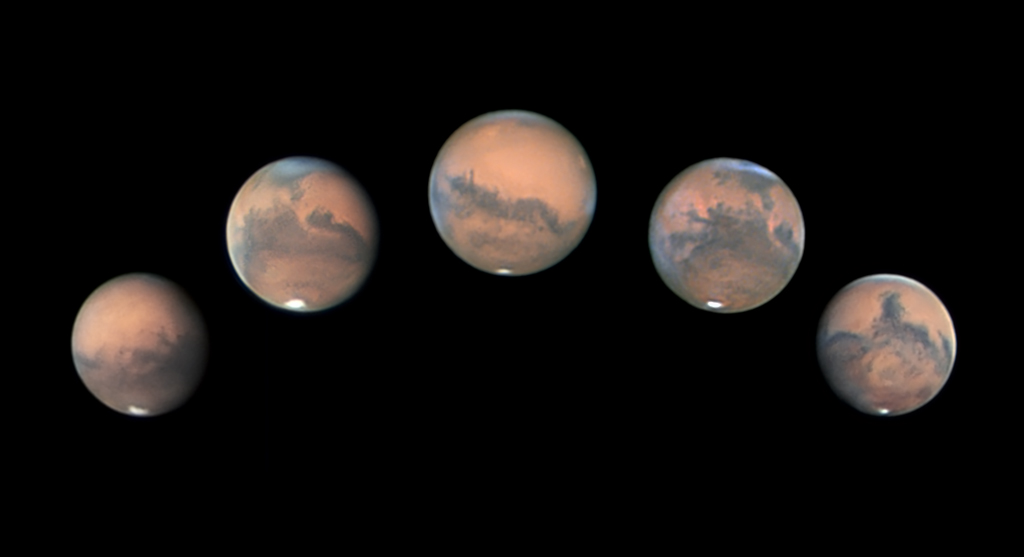
September to November 2020 at Crawley, Sussex. Celestron Skyris 618C colour camera; Celestron C11 Schmidt–Cassegrain telescope, configured with a focal length of 10.9 metres.
Andromeda Galaxy
At 2.5 million light years away, the Andromeda Galaxy (M31) is the nearest major galaxy to our own Milky Way. Under dark skies, it can be seen as a faint smudge with the naked eye. Published in the Sky at Night Magazine, November 2020.

December 2018 at Shorwell, Isle of Wight. Nikon D7000 DSLR; TS 65mm quad refractor. 7 hours exposure.
Whirlpool Galaxy
Messier M51 is a spiral galaxy interacting with its neighbour NGC 5195. It is about 23 million light years away, close enough to be able to record individual star-forming regions within the spiral arms.
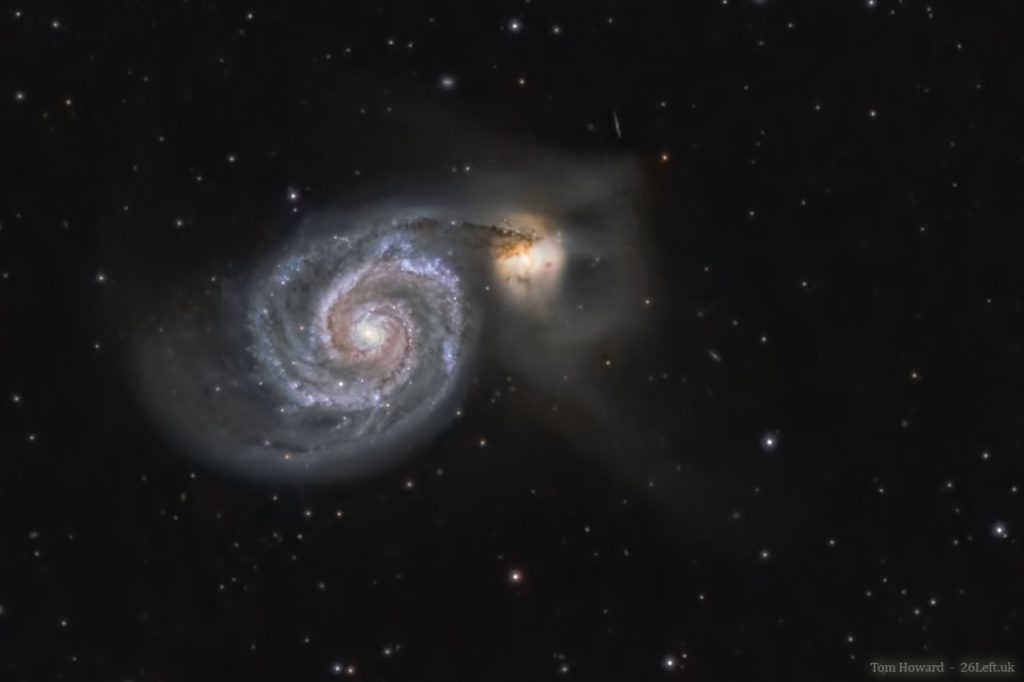
March 2020 at Brighstone, Isle of Wight. Nikon D7000 DSLR; Meade 5000 127mm triplet refractor. 3 hours exposure.
Heart Nebula
One of the few astronomical objects that looks like its name, the Heart Nebula is a region of ionised hydrogen gas in the constellation Cassiopeia. The Sky at Night Magazine published this picture in the astrophotography gallery of their February 2019 issue.
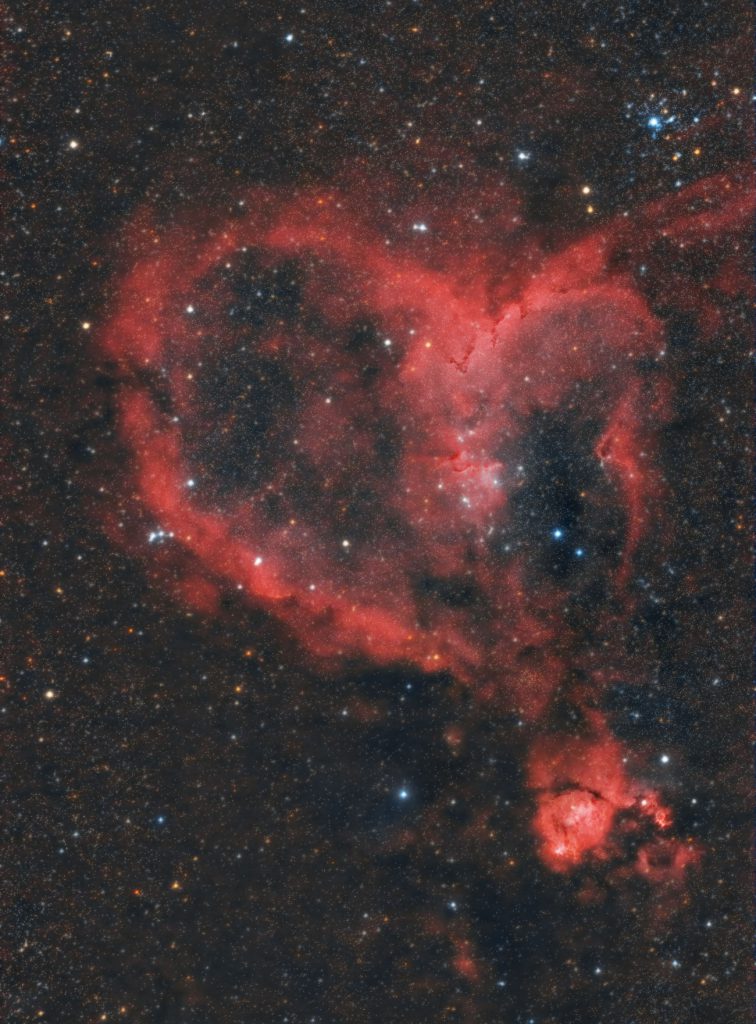
7th October 2018 at Brighstone, Isle of Wight. Nikon D7000 DSLR; TS 65mm quad refractor. 4 hours exposure.
Lunar Eclipse at Totality
At totality, the Moon is thousands of times dimmer than an uneclipsed moon. The sky darkens as the eclipse progresses and more stars become visible. With a telescope, stars are even discernible close-by; an area that would normally be swamped by the glare of the full moon.
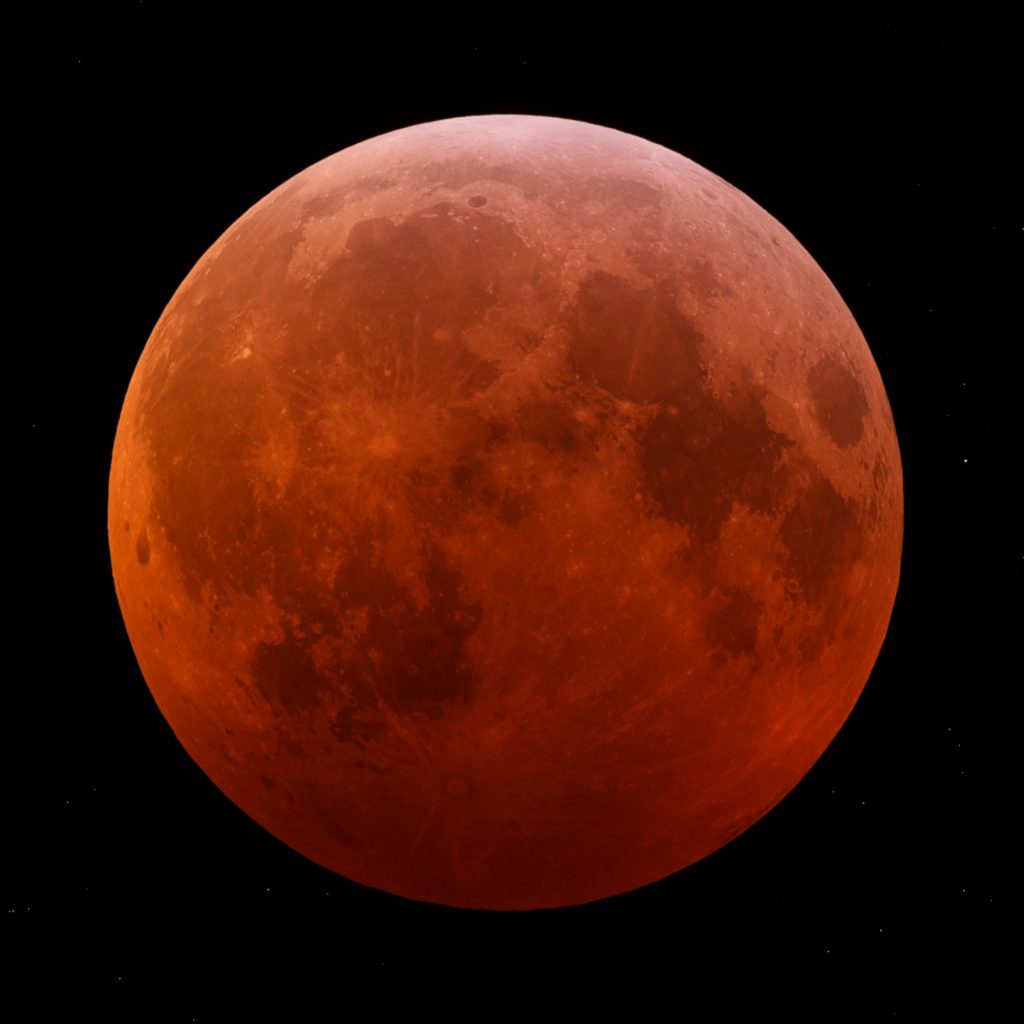
21st January 2019 at Crawley, Sussex. Nikon D7000 DSLR; Meade 5000 127mm triplet refractor. 15 second exposure.
Gibbous Moon, in colour
I processed this image in colour to highlight the diverse mineral composition of the lunar maria, presenting itself as subtle shades of brown and blue. As the Moon approaches its full phase, the rays of bright ejecta thrown out by the larger craters during their formation become visible, particular across the maria. Astrophotography is a balance between science and art: images can reveal interesting detail but should still look appealing.
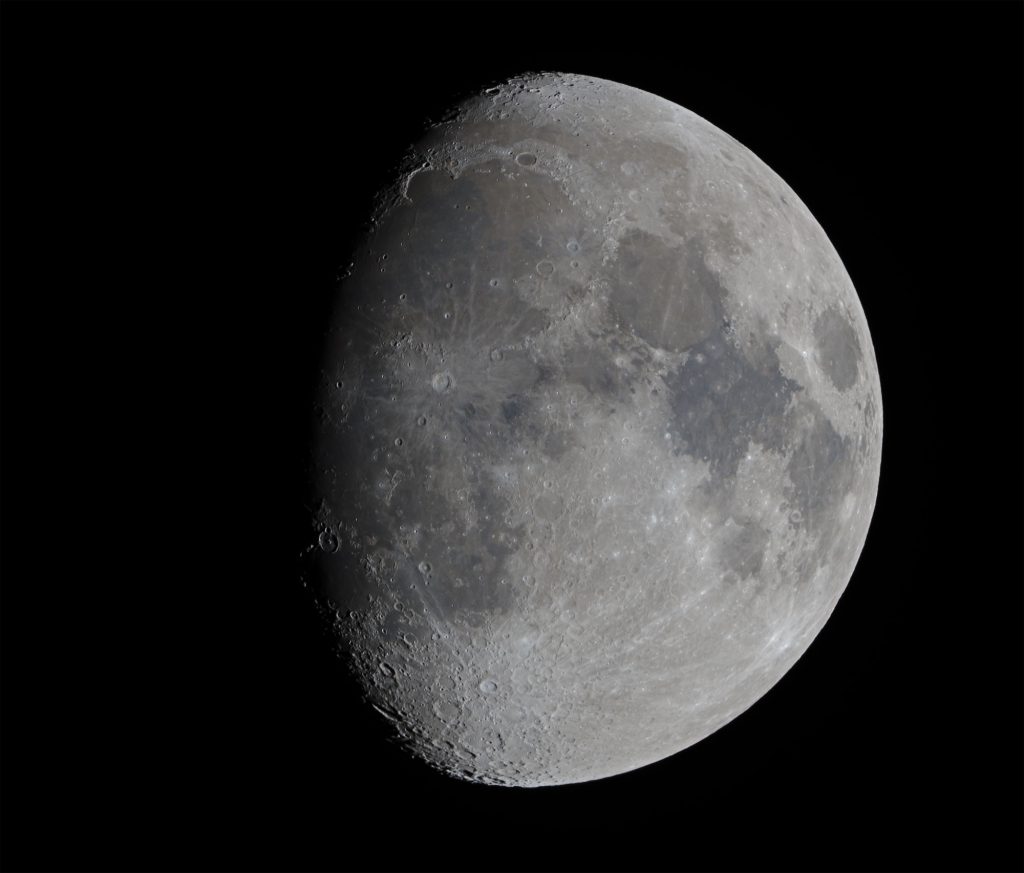
15th February 2019 at Crawley, Sussex. Nikon D7000 DSLR; Meade 5000 127mm triplet refractor. 1/160 second exposure.
Iris Nebula
A bright reflection nebula in Cepheus surrounded by dark nebulae.
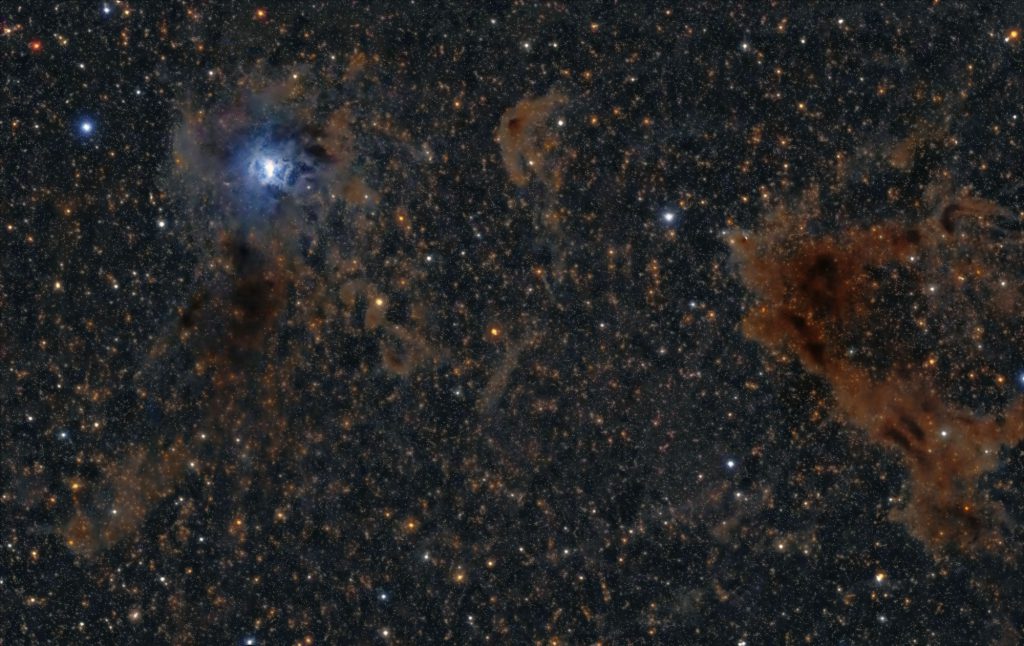
4th October 2018 at Brighstone, Isle of Wight. Nikon D7000 DSLR; TS 65mm quad refractor. 4 hours exposure.
Monoceros
This three-degree sweep of the constellation of Monoceros boasts many types of deep sky objects including dark nebulae, red hydrogen emission nebulae, a blue reflection nebula and a variable nebula. For me, the highlight is the open star cluster, Trumpler 5, towards the bottom of the scene. Most open clusters are blue, indicating the young age of their members, but this cluster is large enough to have held itself together while its stars aged and cooled to a beautiful orange hue.
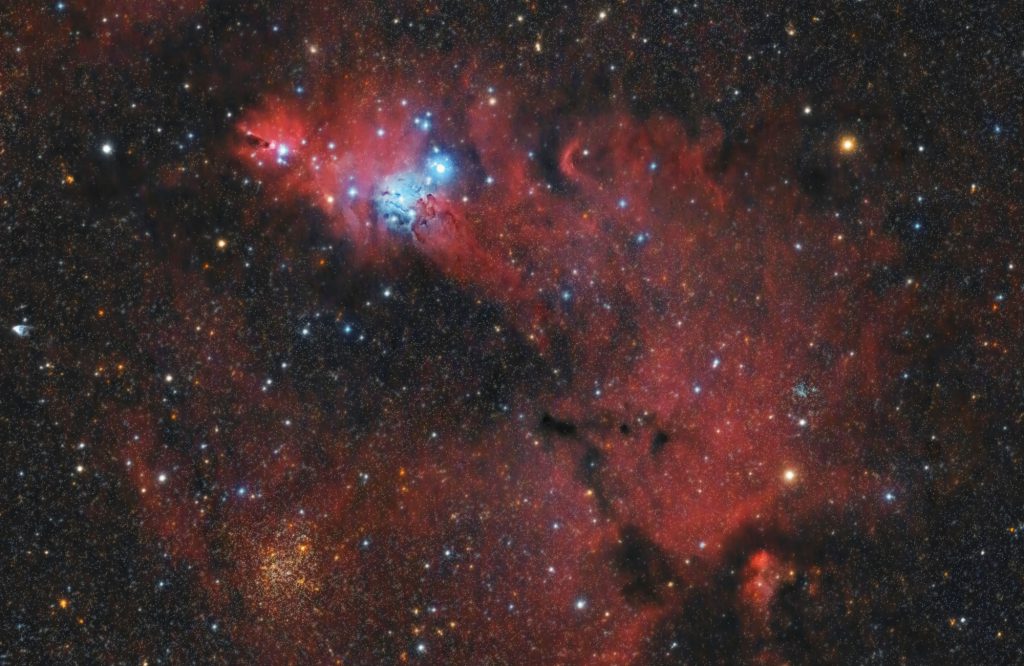
9th December 2018 at Shorwell, Isle of Wight. TS 65mm quad refractor. 4.5 hours exposure.
Flaming Star Nebula
The Flaming Star Nebula and its smaller neighbour are set within a swathe of red ionised hydrogen gas not normally visible to the naked eye but revealed by astrophotography. With all this red, my camera still succeeded in recording the contrasting star colours—blue, white and orange—that show us their surface temperatures.
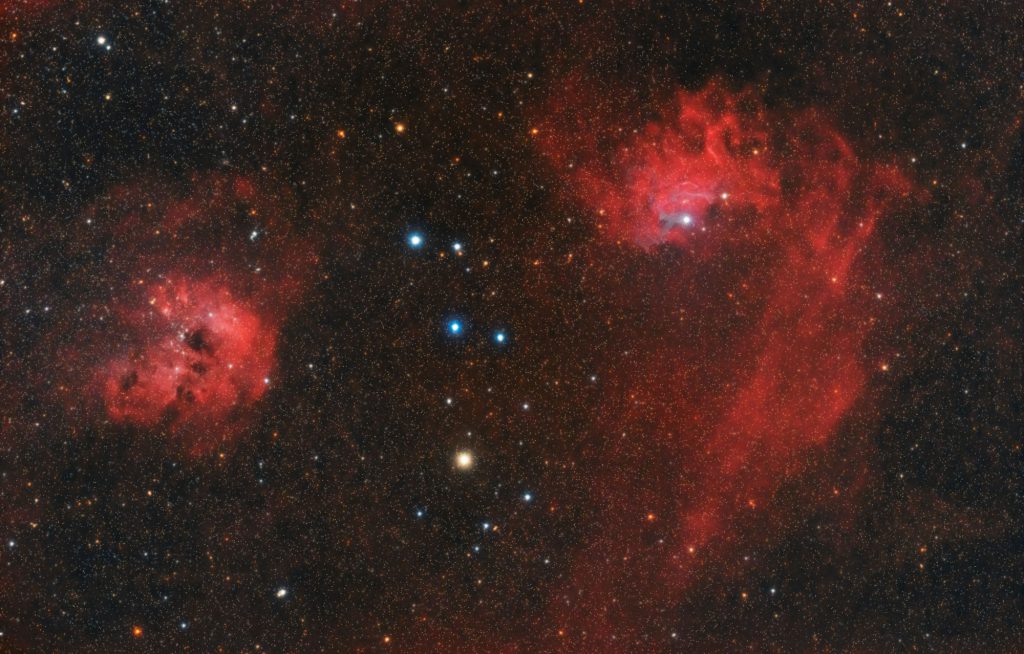
15th October 2017 at Brighstone, Isle of Wight. TS 65mm quad refractor. 2.5 hours exposure.
Jupiter, thirty minutes
This montage demonstrates how fast Jupiter rotates. I took these images thirty minutes apart. They each include Jupiter moon’s Io and Ganymede. With this image, I was shortlisted for the Royal Observatory’s Astronomy Photographer of the Year Competition 2014.
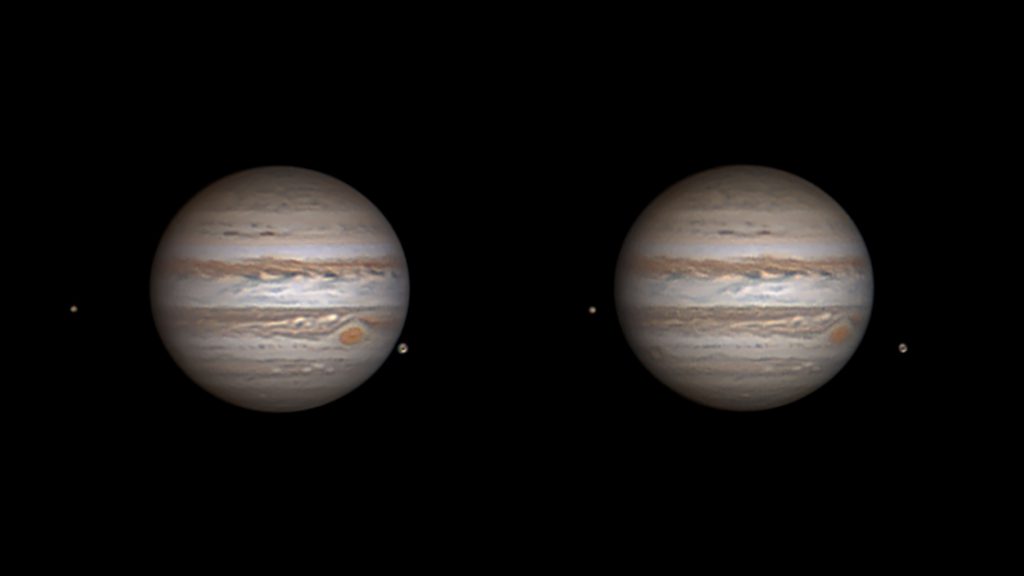
Celestron Skyris 618C camera; Celestron C11 Schmidt–Cassegrain telescope.
Saturn, Five Years
Another montage, this time showing how Saturn’s tilt changes over the years as observed from Earth. I took these five pictures between 2011 and 2015.
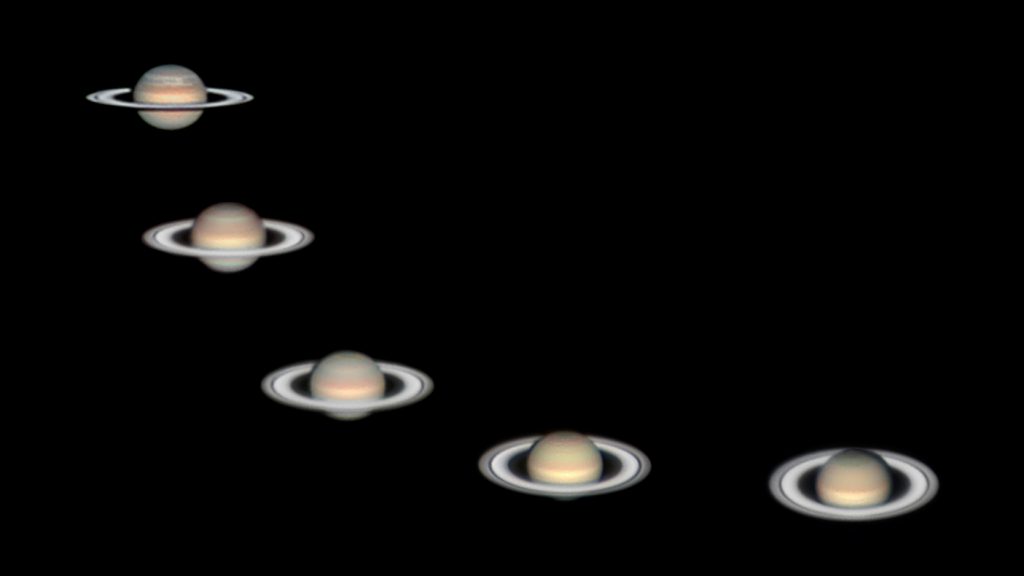
Celestron Skyris 618C camera; Celestron C11 Schmidt–Cassegrain telescope.

